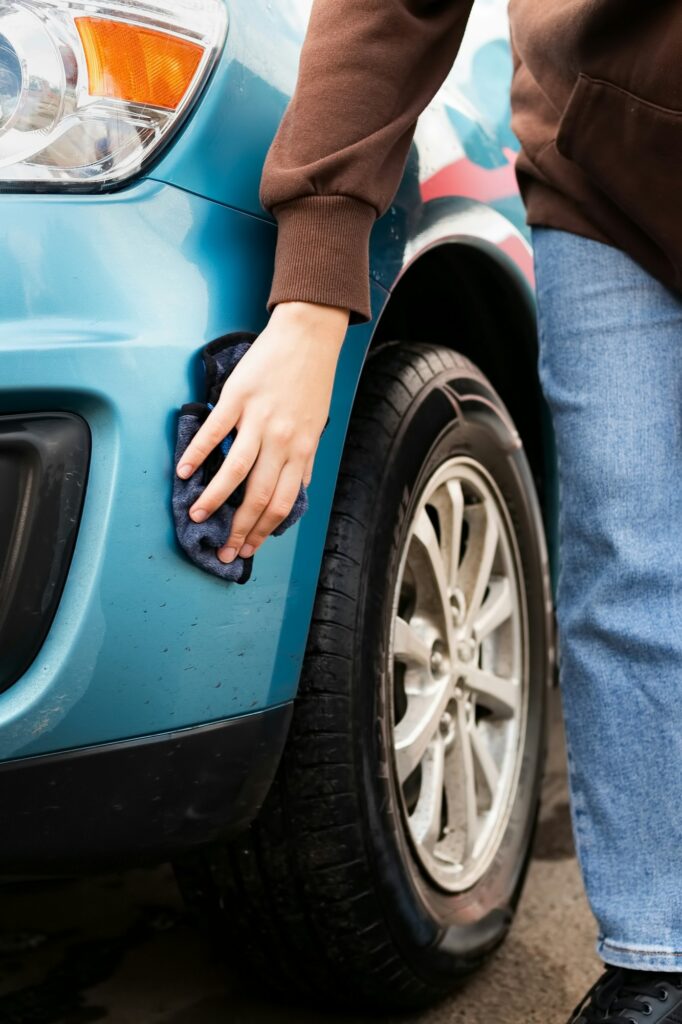It’s probably not the first thing you think about when cleaning your car, but the type of material used to dry it can make a big difference.
Just ask any car fanatic out there and they’ll tell you – the difference between chamois and microfibre is a hot topic. It might just be what prevents you from needing a mobile scratch repair one day.
So we’ve decided to explain how they work, which you should use and what to do if you end up with a scratch on your car.
What are microfiber towels?
Let’s start out with microfiber.
Microfiber is simply any material that is smaller than the diameter of a silk thread.
It is usually made out of polyester and nylon and is usually pretty cheap, especially compared with chamois.
If you are using the towel on your car and it is clear of dirt and dust it is usually pretty safe to use on your vehicle.
What is a chamois?
We might be getting a bit technical here, but your everyday shammy is a nickname that actually comes from the word chamois – however they are exactly the same thing.
A shammy tends to be made of a specific type of chamois leather.
Whereas, chamois refers to the weaved material of a towel and comes in a soft, felt-like finish. As you are probably aware, a lot of car owners will use a chamois to dry their vehicle.
This is probably the most common way to dry your car.

Which works best?
Like with anything in life, going for quality helps.
As such, you’re probably better off with a microfiber towel, especially if the alternative is a cheap chamois.
This is because the higher quality materials are more durable and gentle on the surface of your car. Unfortunately, a cheaper chamois or even a cheap towel can leave scratches.
If, however, time is of the essence and you need a quicker solution, this is where a chamois can help. However, if you’re going down this road, you might want to choose a synthetic chamois over a leather one.
Either way it’s important to have a clean car first
This might sound a bit over the top but making sure your car is clean is incredibly important before you use either fabric to dry it.
This is because leftover dust and dirt that is rubbed in can cause scratches to your car.
It’s also why we suggest a softer material as it means you are less likely to scratch your vehicle.
What to do if you have a car scratch?
Now we’ve talked about a few ways to avoid scratching your car, but unfortunately scratches are a pretty common occurrence.
And worst still, if they are left unchecked, they can become more than just an ugly mark on your vehicle. Some scratches can cause rust, which can cause serious damage to your car.
As such, the first thing you should do if you notice a scratch is identify what type it is. They will usually fall under these four categories.
- Stone chips: These are small, deep, and localised, caused by debris flying and hitting your vehicle at high speeds. These are generally more minor than other forms of scratches.
- Scuffs and clear coat scratches: These scratches often occur during everyday driving through rocks and debris hitting the top layer of the paint.
- Primer scratches: These go a little deeper than other scratches and reach the primer level but the metal underneath is not exposed.
- Deep paint scratches: These are the deepest scratches with the metal being exposed through the paint.
The next thing you should do is book it in for a mobile scratch repair. And that’s where we can help!
If you live in Sydney or its surrounding area and have scrapes, scratches, scruffs or dents on your car – contact Bumpertek today for an obligation-free quote.